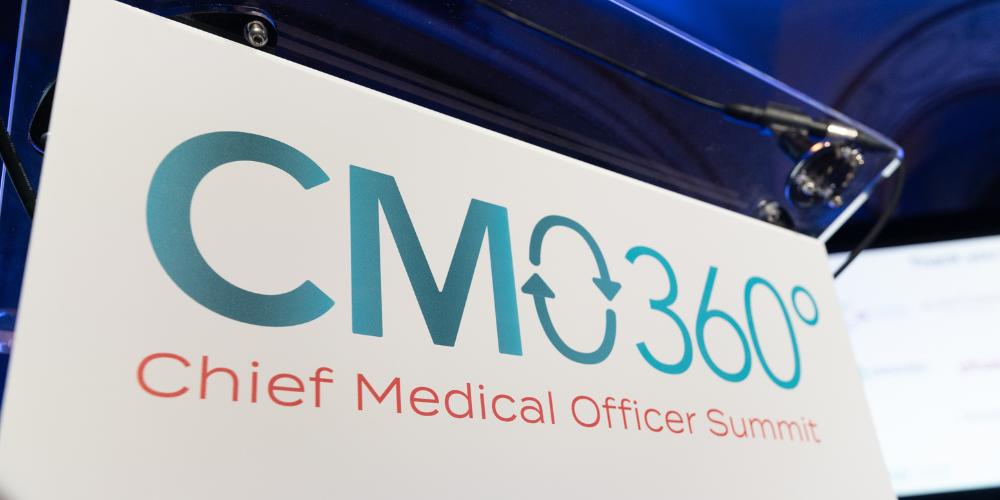
What’s the key difference between being the CMO of a clinical-stage company and being the CMO of a commercial-stage company with an already successful collaboration?
The key differences coming into a commercial-stage company like Legend are the additional layers of complexities – having to manage the treating physicians and their institutions, the commercial component, and working with medical affairs colleagues. The other large difference is the manufacturing: in order to meet the demands of a commercial stage company, you need to have the manufacturing capabilities. That’s very different from being in the clinical stage, where you’re meeting the manufacturing demands of the study.
However, there remain some similarities. The large focus in both are clinical studies, either to get an asset registered for the first time or work towards the product life cycle management in different patient populations.
What is the biggest lesson you’ve learned across your different roles?
How important cohesion is in a company. You need to have a good working relationship with your team. I came initially from academia, where it’s very different. But when you work in a matrix system, you’re no longer siloed. At Legend, and during my time at Eli Lilly and Marker Therapeutics, I’ve worked collectively across the company. It’s critical, especially in cell therapy, where the product is very closely tied with manufacturing, quality and regulatory. The more cohesive these departments are, the more you can thrive.
"It’s critical, especially in cell therapy, where the product is very closely tied with manufacturing, quality and regulatory. The more cohesive these departments are, the more you can thrive."
Can you tell me about your interest in expanding to allogeneic products?
We’re developing allogeneic gamma delta CAR-T cells, and allogeneic CAR-NK cells targeting BCMA for multiple myeloma. We have our autologous BCMA-directed CAR-T, which is approved in multiple myeloma.
Off-the-shelf allogeneic products are attractive for many reasons, one of the biggest being availability. The struggles with off-the-shelf products are being able to create similar efficacy to autologous products, as well as ensuring that the allogeneic cells are expanding. We’re identifying technologies to help curtail some of the host-versus-graft effects. In addition, we’re investigating these products in Phase I by targeting BCMA in multiple myeloma, which gives us the greatest ability to learn about these platforms because this is a disease area we know well.
How do you view your role in facilitating discussions for external partnerships?
My role is twofold: to help facilitate the conversations both within the company and externally with potential partners that will ensure smooth interactions between the groups; and to identify the key areas that the groups should focus on to ensure successful outcomes for the programs and the patients we seek to serve.
What is your advice for setting the foundation for successful partnerships?
You want to be very mindful of the initial contracts and agreements going into the partnership because you're beholden to them. Therefore, it's important to have clinical input into those contracts during those negotiation processes. Another word of advice is to establish a good working relationship right from the start to set a positive tone for the partnership.
For example, Legend announced an exclusive global licensing agreement with Novartis for certain of Legend’s intellectual property for Novartis to develop, manufacture and commercialize CAR-T cell therapies targeting DLL3. Novartis may use its T-Charge platform to manufacture these therapies. Soon after closing the transaction, we had a face-to-face meeting with Novartis, which we believe is extremely valuable for establishing a good partnership, so our respective teams could obtain alignment on key objectives to ensure success.
"As a CMO, you will encounter new challenges that you have never had to deal with in the past. View those tasks with excitement because they allow you to grow in your role and as an individual."
What are your upcoming priorities as CMO?
Right now, we’re looking at moving CARVYKTI® into patients with multiple myeloma in 1-3 prior lines of therapy that are lenalidomide-refractory. The data that we shared last year at ASCO suggests that these patients continue to have improved efficacy compared to standard of care and the ability to benefit with very durable responses. If we’re successful in getting approved in earlier lines, based on the CARTITUDE-4 data, we'll be able to help relapsed/refractory multiple myeloma patients receive a one-time infusion in earlier lines.
In addition, moving forward, we also have two frontline studies in patients with multiple myeloma. One is our CARTITUDE-5 study, where transplant is not planned. Another is CARTITUDE-6, where cilta-cel is compared to autologous stem cell transplant in newly diagnosed patients. Both of these studies will allow us to expand our reach to frontline patients if successful.
In addition, we are very eager to move our other pipeline assets forward, evidenced by the numerous studies we are investigating globally both by our China investigator-initiated trials and ongoing studies in the US.
What do you need to do now in order to ensure success?
We need to execute appropriate expansion of our manufacturing capabilities. This would be required to meet the demand from these additional earlier indications if they are approved. And if we think about our pipeline, in order for us to be successful beyond heme malignancies, we need to better understand some of the limitations of cell therapy in solid tumors. We've already started breaking that barrier with some of the existing programs. One example is the DLL3 program in small-cell lung cancer which uses an innovative armoring approach. This is just one example of various strategies we are employing in our early phase pipeline to expand the success we’ve had in multiple myeloma to solid tumors.
"No one will be an expert in all things. So while you can embrace those challenges, it’s also important to know when to seek out the right people to complement your strengths."
What is the most fulfilling part about being a CMO?
One thing about being a CMO that’s particularly rewarding is the collaboration you have with different groups in the company: clinical development, manufacturing, quality, regulatory and commercial. We have to work together to make our goals achievable. It’s a unique position to work with all these different teams. The reason I got into this field was to bring very important and potentially life-changing therapies to patients. Being able to be part of that team effort at Legend has been extremely rewarding.
What’s your advice for first-time CMOs?
It can be a daunting experience. As a CMO, particularly for the first time but even in general, you will encounter new challenges that you have never had to deal with in the past. View those tasks with excitement because they allow you to grow in your role and as an individual.
No one will be an expert in all things. So while you can embrace those challenges, it’s also important to know when to seek out the right people to complement your strengths. I’ve had the good fortune of having great colleagues to work with, who are extremely experienced in medical affairs, commercial, and manufacturing to name just a few groups. Working with them has allowed me to grow in my role as a CMO.
What is your advice for young people just starting out in science careers, whether that be academia or industry?
You have to follow your interest and passion, because that’s what will drive you forward and allow you to overcome the challenges ahead. I would also say to be very open to the possibilities that you encounter throughout your career and be willing to go down a road less-traveled.
For me, I took an immunology course in college and was instantly drawn to the subject. I was fascinated with the elegance and beauty of the immune system, and how it evolved over time. That grew into a career of research in oncology. It’s a battle between function and dysfunction. If you understand some of the complexities of what it takes to fight cancer, then this is an opportunity to make a difference and help develop therapies for patients.
What IO research are you interested in, outside of your own work?
Outside Legend, I'm very much interested in following any novel approaches that address the heterogeneity in solid tumors and tackle the issues of the tumor microenvironment.
Speakers








